Larry Bannock was 36 when I produced this story for MacNeil-Lehrer Newshour in 1984. Chief of The Golden Starhunters, he is part of a rich New Orleans tradition — the Mardi Gras Indians. Steeped in history, these “Indian tribes” create fabulous costumes from beads, feathers, rhinestones and sequins using Indian motifs and organize their tribes into competing groups of musicians for a black Mardi Gras that few whites ever saw. Some of the tribes – the Wild Tchoupitoulas, the Yellow Pocahontas and the Wild Magnolias – have become famous nationally.
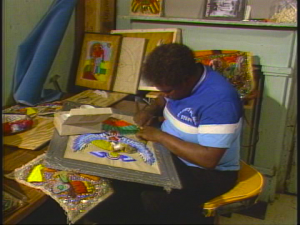 “Massin’ Indian is like a feeling that you have that you can’t explain. It’s a desire. An outsider wouldn’t understand it. You want to do something that remembers the Indians,” says Bannock.
“Massin’ Indian is like a feeling that you have that you can’t explain. It’s a desire. An outsider wouldn’t understand it. You want to do something that remembers the Indians,” says Bannock.
“Massin’ Indian” means masquerading as Indians and the tradition dates back to slavery when local Indian tribes were the only friends of enslaved blacks. Scholars argue over all the influences on the tradition while chiefs like Bannock continue to sew their stunning costumes each year.
“The only requirement of an Indian is that you gotta want to sew,” Bannock explains who was laid off as a welder and earns a living at odd carpenter jobs.
“And you gotta feel it. You don’t create a lot of ideas that don’t relate to the Indians. You’ve got to have a desire to sew, a passion because you spend 3 or 4 hours a night for a year to sew your costume.” Bannock will spend from $2,000 to $3,000 each year (1984 figures) on the materials, beads, tools and threads for his costume.
Another part of the tradition is the weekly music practice sessions at a local bar. Bannock’s group, The Golden Starhunters, bring congas, snares and tamborines to work out their rhythms and songs. “We form a percussion circle and sing songs about heros in our community, people who have passed, we’re remembering them,” says Bannock.
“This (tradition) is what keeps Mardi Gras going. People in the neighborhoods, the grass roots, working together, sewing and doing what they feel.”
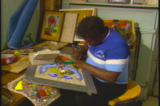
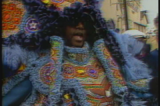
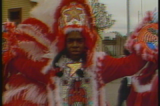

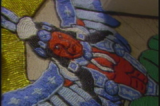
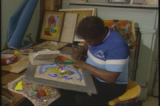
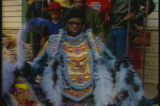
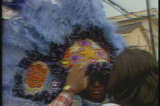
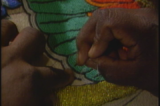
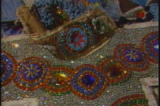
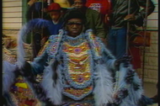
how can i get a copy off this plase let me know
Big Chief Bannock passed away on 4/30/2014 he was my god father
can I receive a copy of this
Thank you for passing along this information. What a huge loss. My heart bursts for you and Larry’s large extended “family” in NOLA.
this is a great lost..as for as i can remember .we look forward to waking up to the sounds of tamborines drums an the big chief calling his tribe..its a beautiful tradition..we love you larry…you will always be my big chief
Not only was Big Chief Bannock a noted and talented Mardi Gras Indian, he was also a wonderfully great cousin who always treated and cared for me like a big brother. Everything I know about masking (from tearing strips of velour/ velvet type material used for making ruffles when you’re too young to handle scissors, needle and thread,removing bead work and stone work from patches, to learnig the skill of breaking a crown, part of the finishing touch) I proudly say I learned from him. With Everlasting Love, I’ll never forget you Brother/Cousin.
It is so inspiring to know that those skills and that craft and artistry were passed on to you. What a legacy!
I am falling in Love with the MGI culture (even with minimal exposure) and cannot help but feel a deep loss of one of the Big Cheifs. To hear and realize the dedication that the MGI tribes have for their culture is inspiring. With out a doubt this pride and dedication to ones heritage needs to be felt by all indigenous tribes of the globe.
great homecoming ceremony..i love.the love shown..i came from atlanta ..to bring big chief home..much love..and we did that gerttown love our own..jackie felicia rosalyn kim an gails eilu would be so proud of her girls…thanls fpr the besutiful ceremony.
..everyone whp took part ..thanls for the lpve